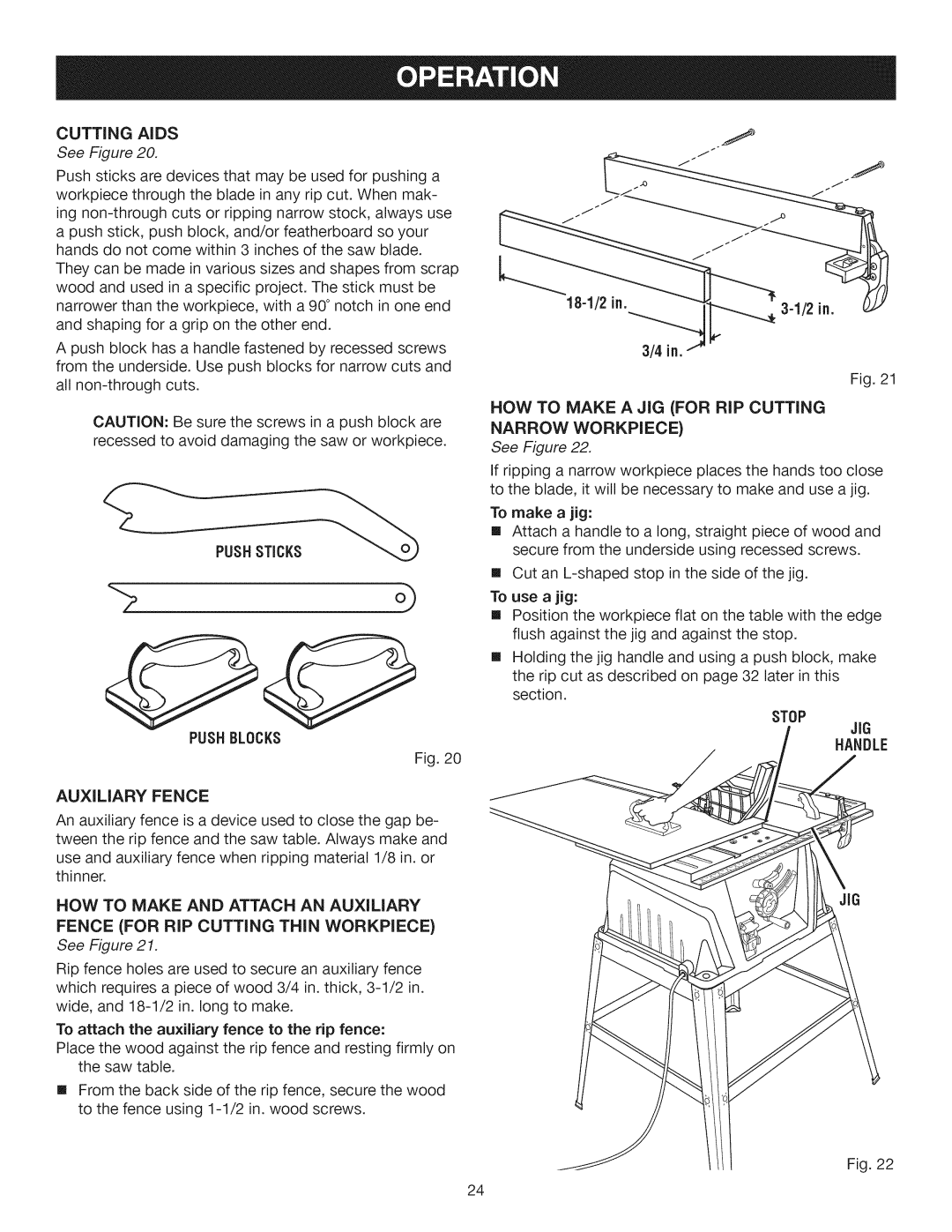
CUTTINGAIDS
See Figure 20.
Push sticks are devices that may be used for pushing a workpiece through the blade in any rip cut. When mak- ing
A push block has a handle fastened by recessed screws from the underside. Use push blocks for narrow cuts and all
CAUTION: Be sure the screws in a push block are recessed to avoid damaging the saw or workpiece.
PUSHBLOCKS
Fig. 20
AUXILIARY FENCE
An auxiliary fence is a device used to close the gap be- tween the rip fence and the saw table. Always make and use and auxiliary fence when ripping material 1/8 in. or thinner.
HOW TO MAKE AND ATTACH AN AUXILIARY FENCE (FOR RiP CUTTING THIN WORKPIECE) See Figure 21.
Rip fence holes are used to secure an auxiliary fence which requires a piece of wood 3/4 in. thick,
To attach the auxiliary fence to the rip fence:
Place the wood against the rip fence and resting firmly on the saw table.
[] From the back side of the rip fence, secure the wood to the fence using
| |
|
3/4 in.
Fig. 21
HOW TO MAKE A JIG (FOR RiP CUTTING NARROW WORKPIECE)
See Figure 22.
If ripping a narrow workpiece places the hands too close to the blade, it will be necessary to make and use a jig.
To make a jig:
[] Attach a handle to a long, straight piece of wood and
secure from the underside using recessed screws.
[] Cut an
To use a jig:
[] Position the workpiece flat on the table with the edge flush against the jig and against the stop.
[] Holding the jig handle and using a push block, make the rip cut as described on page 32 later in this section.
STOP
JIG
HANDLE
JIG
Fig. 22
24
